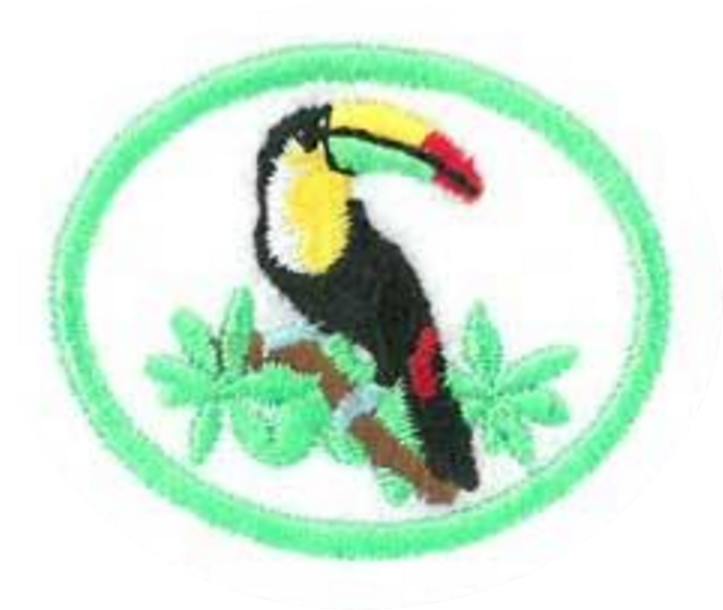Difference between revisions of "AY Honors/Rainforests/Requirements"
Jomegat bot (talk | contribs) m (Add RequirementsHeader) |
m |
||
| (10 intermediate revisions by 2 users not shown) | |||
| Line 1: | Line 1: | ||
| − | + | {{HonorSubpage}} | |
| − | + | ||
| + | <section begin=Body /> | ||
| + | |||
| + | <b>1. <section begin=req1 /><noinclude><translate><!--T:1--> | ||
| + | </noinclude>Describe a rainforest. | ||
| + | <noinclude></translate></noinclude><section end=req1 /></b> | ||
| + | |||
| + | <b>2. <section begin=req2 /><noinclude><translate><!--T:2--> | ||
| + | </noinclude>State the two main kinds of rainforests and describe how they are different. Diagram on a map locations of these two main kinds of rainforests identifying these types. | ||
| + | <noinclude></translate></noinclude><section end=req2 /></b> | ||
| + | |||
| + | <b>3. <section begin=req3 /><noinclude><translate><!--T:3--> | ||
| + | </noinclude>Explain what causes so much rain to fall in rainforest biome areas. | ||
| + | <noinclude></translate></noinclude><section end=req3 /></b> | ||
| + | |||
| + | <b>4. <section begin=req4 /><noinclude><translate><!--T:4--> | ||
| + | </noinclude>Draw a diagram showing the vertical layers of plants in a tropical rainforest.Label them. | ||
| + | <noinclude></translate></noinclude><section end=req4 /></b> | ||
| + | |||
| + | <b>5. <section begin=req5 /><noinclude><translate><!--T:5--> | ||
| + | </noinclude>Describe, draw, or use a hands-on demonstration to show how rainforests regenerate (replace lost or injured living organisms). | ||
| + | <noinclude></translate></noinclude><section end=req5 /></b> | ||
| + | |||
| + | <b>6. <section begin=req6 /><noinclude><translate><!--T:6--> | ||
| + | </noinclude>Be able to identify five birds that live in the tropical rainforest. | ||
| + | <noinclude></translate></noinclude><section end=req6 /></b> | ||
| + | |||
| + | <b>7. <section begin=req7 /><noinclude><translate><!--T:7--> | ||
| + | </noinclude>Be able to identify ten animals that live in the tropical rainforest. | ||
| + | <noinclude></translate></noinclude><section end=req7 /></b> | ||
| + | |||
| + | <b>8. <section begin=req8 /><noinclude><translate><!--T:8--> | ||
| + | </noinclude>List the predominant vegetation in rainforests. | ||
| + | <noinclude></translate></noinclude><section end=req8 /></b> | ||
| + | |||
| + | <b>9. <section begin=req9 /><noinclude><translate><!--T:9--> | ||
| + | </noinclude>What is an epiphyte? Be able to identify from pictures three plant examples. | ||
| + | <noinclude></translate></noinclude><section end=req9 /></b> | ||
| + | |||
| + | <b>10. <section begin=req10 /><noinclude><translate><!--T:10--> | ||
| + | </noinclude>Learn about one invasive species that affects the rainforest. | ||
| + | <noinclude></translate></noinclude><section end=req10 /></b> | ||
| + | |||
| + | <b>11. <section begin=req11 /><noinclude><translate><!--T:11--> | ||
| + | </noinclude>What are some renewable resources that rainforests provide for humans? | ||
| + | <noinclude></translate></noinclude><section end=req11 /></b> | ||
| + | |||
| + | <b>12. <section begin=req12 /><noinclude><translate><!--T:12--> | ||
| + | </noinclude>List at least three ways that rainforests can be protected. | ||
| + | <noinclude></translate></noinclude><section end=req12 /></b> | ||
| + | |||
| + | <b>13. <section begin=req13 /><noinclude><translate><!--T:13--> | ||
| + | </noinclude>Prepare an object lesson about a plant, animal, or bird that lives in the rainforest. Share this lesson in a group setting such as a club/unit worship, children’s story in church, campfire, or vespers. | ||
| + | <noinclude></translate></noinclude><section end=req13 /></b> | ||
| + | |||
| + | <section begin=challenge /> | ||
| + | <b>14. <section begin=req14 /><noinclude><translate><!--T:14--> | ||
| + | </noinclude>Do at least three of the following activities: | ||
| + | <noinclude></translate></noinclude><section end=req14 /></b> | ||
| + | |||
| + | :<b>a. <section begin=req14a /><noinclude><translate><!--T:15--> | ||
| + | </noinclude>Visit an exhibit or conservatory of rainforest trees and/or plants. | ||
| + | <noinclude></translate></noinclude><section end=req14a /></b> | ||
| + | |||
| + | :<b>b. <section begin=req14b /><noinclude><translate><!--T:16--> | ||
| + | </noinclude>Make a collection of at least three types of epiphytes. | ||
| + | <noinclude></translate></noinclude><section end=req14b /></b> | ||
| + | |||
| + | :<b>c. <section begin=req14c /><noinclude><translate><!--T:17--> | ||
| + | </noinclude>Visit a zoo where there are animals typical of the rainforest biome. | ||
| + | <noinclude></translate></noinclude><section end=req14c /></b> | ||
| + | |||
| + | :<b>d. <section begin=req14d /><noinclude><translate><!--T:18--> | ||
| + | </noinclude>Watch a video about the rainforest, or plants or animals that live there. | ||
| + | <noinclude></translate></noinclude><section end=req14d /></b> | ||
| + | |||
| + | :<b>e. <section begin=req14e /><noinclude><translate><!--T:19--> | ||
| + | </noinclude>Draw or paint a picture of something you had fun learning about while studying the rainforest. | ||
| + | <noinclude></translate></noinclude><section end=req14e /></b> | ||
| + | |||
| + | :<b>f. <section begin=req14f /><noinclude><translate><!--T:20--> | ||
| + | </noinclude>As a group, make a short video about a real life rainforest conservation project. Explain why this specific habitat should be saved. | ||
| + | <noinclude></translate></noinclude><section end=req14f /></b> | ||
| + | <section end=challenge /> | ||
| + | <section end=Body /> | ||
Latest revision as of 23:37, 3 January 2023
1. Describe a rainforest.
2. State the two main kinds of rainforests and describe how they are different. Diagram on a map locations of these two main kinds of rainforests identifying these types.
3. Explain what causes so much rain to fall in rainforest biome areas.
4. Draw a diagram showing the vertical layers of plants in a tropical rainforest.Label them.
5. Describe, draw, or use a hands-on demonstration to show how rainforests regenerate (replace lost or injured living organisms).
6. Be able to identify five birds that live in the tropical rainforest.
7. Be able to identify ten animals that live in the tropical rainforest.
8. List the predominant vegetation in rainforests.
9. What is an epiphyte? Be able to identify from pictures three plant examples.
10. Learn about one invasive species that affects the rainforest.
11. What are some renewable resources that rainforests provide for humans?
12. List at least three ways that rainforests can be protected.
13. Prepare an object lesson about a plant, animal, or bird that lives in the rainforest. Share this lesson in a group setting such as a club/unit worship, children’s story in church, campfire, or vespers.
14. Do at least three of the following activities:
- a. Visit an exhibit or conservatory of rainforest trees and/or plants.
- b. Make a collection of at least three types of epiphytes.
- c. Visit a zoo where there are animals typical of the rainforest biome.
- d. Watch a video about the rainforest, or plants or animals that live there.
- e. Draw or paint a picture of something you had fun learning about while studying the rainforest.
- f. As a group, make a short video about a real life rainforest conservation project. Explain why this specific habitat should be saved.


